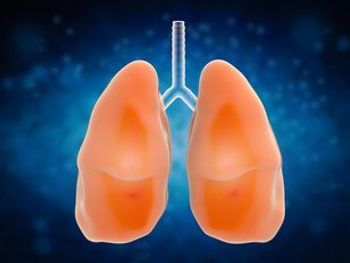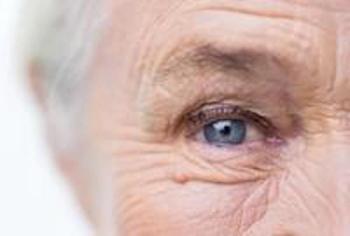
A new study found that adolescents with short-term exclusive cigarette use had a higher risk of incident asthma after 5 years of follow-up.

Julia is an associate editor for The American Journal of Managed Care® (AJMC®) and joined AJMC® in 2022. She produces written and video content covering multiple disease states, and assists in the screening process for manuscripts submitted to AJMC®.
She has a BA in English language and literature from Rutgers University. You can connect with Julia on LinkedIn.

A new study found that adolescents with short-term exclusive cigarette use had a higher risk of incident asthma after 5 years of follow-up.

Fundus photographs of eyes with diabetic macular edema (DME) could be used to estimate best-corrected visual acuity (BCVA) when artificial intelligence examines the pictures.

Nirsevimab was unanimously recommended by the FDA Advisory Committee for immunization against respiratory syncytial virus (RSV) in infants.

Mark Fendrick, MD, and Nicholas Bagley, JD, discuss how the ruling in Braidwood v Becerra could affect availability of preventive care.

Childhood myopia progression could be treated with low-dose atropine due to the safety and efficacy displayed in this study.

Children with narcolepsy often have disrupted nighttime sleep (DNS), which could lead to other effects, such as memory issues.

Panelists at SLEEP 2023 presented preliminary data on how sleep interventions could close the gap in treating Black children and families in sleep health.

Posters presented at the SLEEP 2023 conference showed that transition between medications was easy but 1 medication felt more effective to patients.

A panel at SLEEP 2023 discussed the ways that long COVID-19 has affected numerous areas of sleep health.

Posters presented at SLEEP 2023 estimated the prevalence of idiopathic hypersomnia as well as incidence of comorbidities.

Presenters at SLEEP 2023 revealed research that linked childhood sleep patterns to weight in young children.

The sharp reduction in costs for hospitalization from respiratory syncytial virus (RSV) in infants 3 months and younger after the COVID-19 pandemic outweighed the cost increase for children aged 3 to 24 months.

Mark Fendrick, MD, speaks about how how minority populations may be the most at risk following the Braidwood ruling on preventive care.

Children were hospitalized most commonly due to respiratory syncytial virus (RSV) compared with influenza and COVID-19 during a season with respiratory pathogen cocirculation.

The SLEEP 2023 conference will be held in Indianapolis from June 3 to June 7 and promises to feature topics including sleep health disparities, hypersomnia, geriatric medicine, and new technologies.

Adalimumab had a slight advantage over infliximab in terms of adverse events when used to treat patients with noninfectious uveitis (NIU).

Nicholas Bagley, JD, professor at Michigan Law at the University of Michigan, speaks about the benefits of ongoing communication about the effects of the Braidwood ruling and what will be done to keep preventive care accessible.

Although lack of routine testing and limitations to current diagnostic testing likely lead to underreporting of respiratory syncytial virus, RSV still poses a substantial economic burden.

About 69% of pediatric patients had discontinued amblyopia therapy during COVID-19 even as their parents reported that adherence was good.

Nicholas Bagley, JD, professor at Michigan Law at the University of Michigan, discusses how Congress can help address the consequences of Braidwood v Becerra.

Aflibercept was a less cost-effective treatment for retinal vein occlusion (RVO) compared with bevacizumab, although visual acuity outcomes were similar.

A recent study compared hospitalizations and ages of children with respiratory syncytial virus (RSV) infection before the pandemic and afterwards.

Nicholas Bagley, JD, says immediate effects of the ruling have been modest so far.

An analysis of an urban population of children indicated that age was a strong predictor in the diagnosis of respiratory syncytial virus (RSV) and influenza.

The relationship between myopia and primary open-angle glaucoma (POAG) was stronger in Asian, Black, and Hispanic individuals compared with White individuals.

A study found that not being infected with respiratory syncytial virus (RSV) in the first year of life was associated with a decreased risk of developing asthma in childhood.

Cost sharing for several treatments could disappear following the Braidwood v Becerra ruling, according to A. Mark Fendrick, MD, director of the V-BID Center at the University of Michigan and co-editor in chief of The American Journal of Managed Care®.

A vaccine for adults 60 years and older was approved by the FDA for protection against respiratory syncytial virus, making it the first such vaccine to be approved worldwide.

Further epidemiologic studies on nonpharmaceutical interventions are warranted to assess their relationship with respiratory syncytial virus (RSV).

When presented with a set of multiple choice questions used to help trainees practice for the ophthalmology board certification exams, the artificial intelligence (AI) chatbot ChatGPT was able to answer only half correctly.

259 Prospect Plains Rd, Bldg H
Cranbury, NJ 08512
© 2025 MJH Life Sciences®
All rights reserved.
